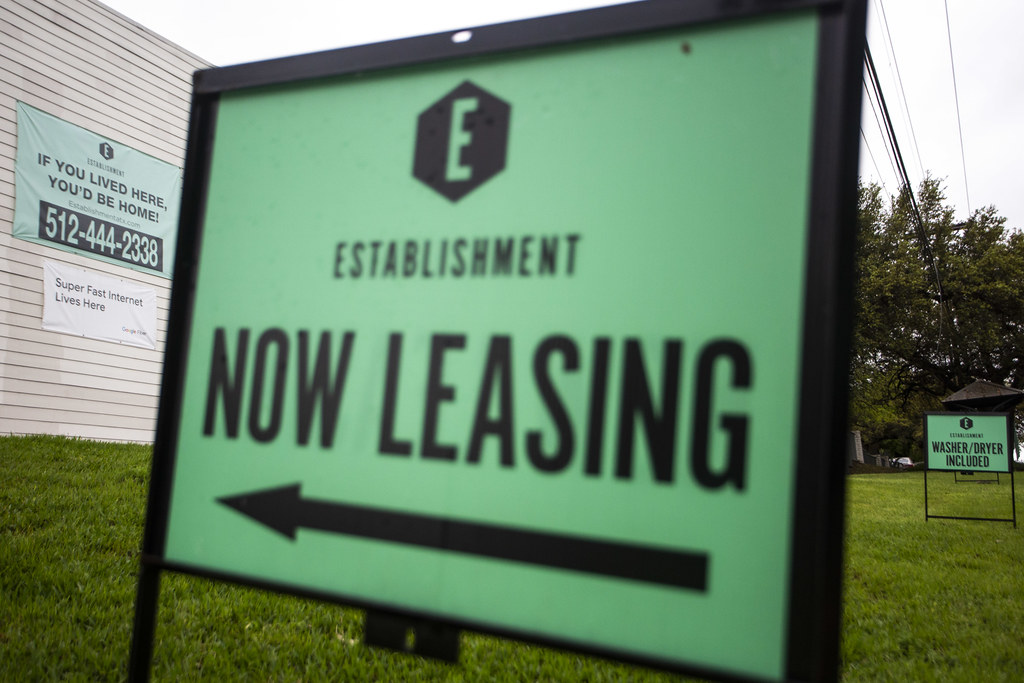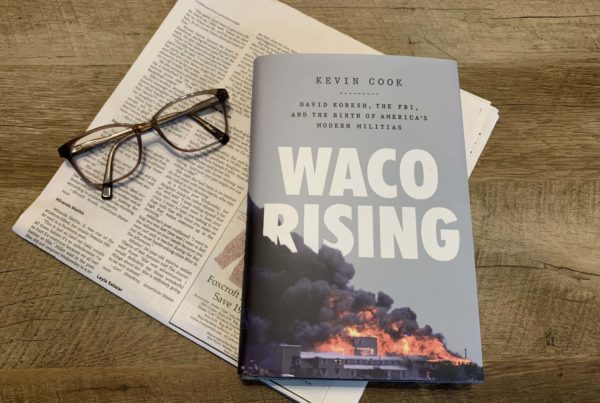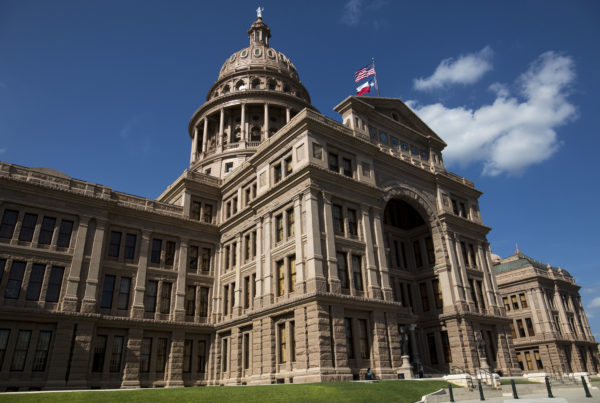In a two-bedroom South Austin apartment, Maddie Hastings goes through the familiar routine of giving a tour.
“Last year, I think I took about 350 leads and leased about 110 of those or so,” she told the Texas Standard.

Apartment locator Maddie Hastings shows a unit in South Austin. Photo by Sean Saldana / Texas Standard
As an apartment locator coming up on 3 1/2 years in the business, she knows exactly what people ask about. She makes note of the apartment’s large balcony, the in-unit washer and dryer, and the walk-in closet. Pacing through the kitchen, she points out stainless steel appliances, formica countertops and white cabinets with new hardware fixtures.
As a native Austinite who now spends her days comparing square footage, amenities and locations, Hastings describes a familiar routine to interactions with her clients: “Usually what happens is they’ll give me a budget, I’ll send them places within their budget, and then they realize what they want is going to cost more.”
In Texas, the median gross rent is $1,146 a month. For this apartment, a partially renovated 2-bed, 2-bath located in one of the country’s hottest real estate markets, that figure is $1,565.
“So, location, then size, then newness and niceness are typically the three things that for most people, they have to choose two out of three,” Hastings said.
Calculating cost of rent
When it comes to figuring out what factors into the cost of an apartment, there are a handful of well-known indicators among renters: size, location, age of the complex. For rental property owners, the calculation is a little different.
Things like insurance, repairs, mortgage payments and payroll expenses play a large role in operating rental properties – and according to research from the National Apartment Association, the biggest factor of all is property taxes, accounting for as much as 40% of all operating expenses.
» TELL US: What do you want to know about property taxes in Texas?
David Mintz, vice president of government affairs for the Texas Apartment Association, helps represent the interests of 10,000 rental property owners. His rough guideline for figuring out how much of a typical rent payment is earmarked for taxes is that it can be twenty cents on the dollar or more going toward the property tax bill.
All this means that when property taxes rise, landlords will often raise rents in response.
Of course, property owners always have the option of selling their property should taxes (or any other expense) become too burdensome, but as Mintz points out, “the difficulty is when somebody else comes in to buy that property, if they’re going to maintain it as a rental property, they still have the same pressures of those operating costs that get translated to rent.”














